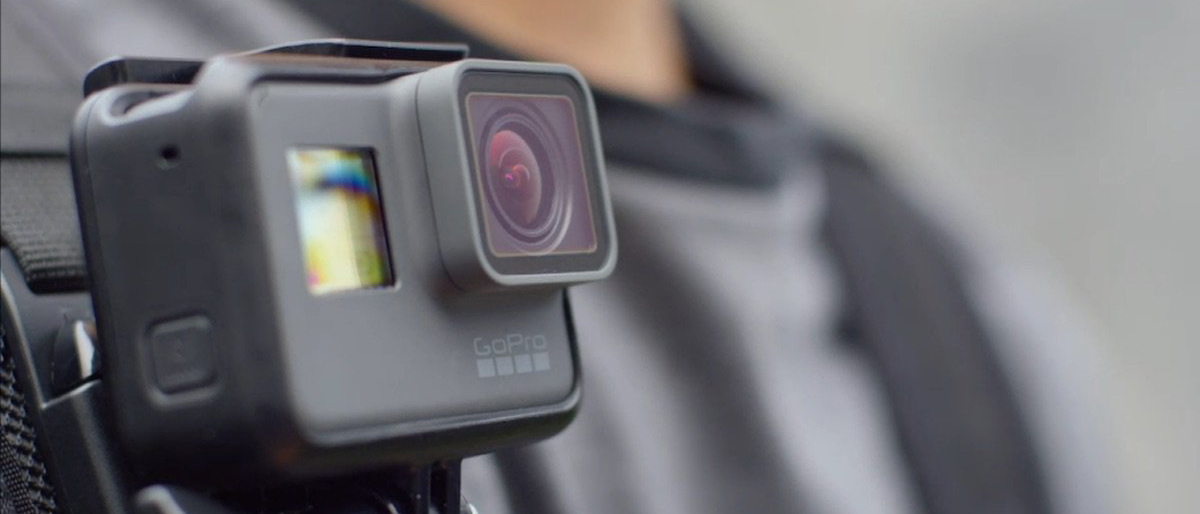TechRadar Verdict
Buttery-smooth 4K video comes as standard with the Hero5 Black, while a touchscreen interface and voice activation makes it the most user-friendly GoPro to date. However, it doesn't feel as robust without its plastic casing, and that touchscreen can be awkward to use.
Pros
- +
Voice-activated camera controls
- +
Improved video and image quality
- +
Easy-to-use range of editing apps
- +
Waterproof to 10m/33ft without a case
- +
Refined design
Cons
- -
Doesn't feel as sturdy as previous gen
- -
Touchscreen fiddly to use in the wet
- -
Editing on desktop still clunky
Why you can trust TechRadar
GoPro has long been synonymous with extreme sports enthusiasts who insist on leaping off buildings with a camera attached to their head, rather than doing something more sedate of a weekend.
[Update: The GoPro Hero5 Black has not only been replaced by the Hero6 Black, but also the new Hero7 Black as well. The Hero6 Black offers 4K at 60fps, as well as improved image stabilization and numerous other tweaks, while the Hero7 Black delivers an even better image stabilization, improved user interface, as well as a host of other refinements and improvements. Don't discount the Hero5 Black though - it's still a cracking action camera that's seen a hefty price drop in recent months. If you can live without some of the new features that the Hero6 Black and Hero7 Black brings, then the Hero5 Black is still a great buy.]
The footage captured by these sturdy little action cams (or POV cameras) has historically been among the best, if not the best, on the market, and as such has been used by everyone from skilled filmmakers to amateurs looking to add a professional sheen to their YouTube channel.
Features
- 4K video capture at 30fps
- 2.0-inch touchscreen
- 12MP still images
Unfortunately, previous generations of GoPros have erred on the unapproachable side, lacking a rear screen to set up and review footage, bamboozling users with a variety of complicated camera settings, and making it a pain to retrieve footage and images when in a rush or on the move.
As a result, a plethora of rivals have popped up, boasting a number of user-friendly features in an attempt to steal sales.
TomTom's Bandit, Garmin's Virb range and the seriously affordable Olfi camera all offer 4K video recording, but with a much friendlier UI designed to appeal to those starting out in the action cam game.
Like all good tech companies, GoPro has listened to customer grumbles, and has thoroughly updated its latest line of cameras to ensure they still pack the same heavyweight features but are generally easier to live with.
That range now consists of the Hero Session, Hero5 Session and the daddy of the lot: the Hero5 Black.

New additions to this high-performance monster include a rear touchscreen display, voice activation and super-easy one-button control, while the overall experience has been abridged to make capturing the action as painless as possible.
At £349.99 / $399 / AU$569, the Hero5 Black is priced in line with the Hero4 Black that it replaces, despite the new gizmos, while video resolution is boosted to 4K at 30fps, still images jump to 12MP and ultra-smooth super slow-mo opportunities are now possible with a 1080p resolution at 120fps.
Stills can be taken in single, burst and timelapse modes, and saved as raw files for post-production tinkering. In addition, a new WDR (Wide Dynamic Range) mode, which is GoPro's version of High Dynamic Range (HDR), makes shooting perfectly exposed still images much easier.
Design and accessories
- Simplified design
- Waterproof up to 33ft (10m) - without waterproof housing
- Bigger battery, small wrap-around frame and USB Type-C port
Aesthetically, the Hero5 Black – which sits above the cuboidal Hero5 Session – packs a neat matte black exterior and remains about the size of a matchbox.
The two-inch touchscreen on the back is bright and easy to see, while a smaller screen at the front gives readouts on the shooting mode, SD card space and remaining battery.
There's also a large red button on the top of the camera, which GoPro refers to as its One-Button Control. Simply press this rubbery square and the camera powers on and immediately starts recording.
The eagle-eyed among you will notice that the Hero5 Black no longer wears the protective casing of its forefather – that's because this camera is waterproof up to 33ft (10m) straight out of the box, although the absence of a case does leave it feeling a little exposed (more on this later).
The small lens cover on the front of the camera is now removable, as GoPro offers a range of filters that are said to boost footage captured when diving or snorkelling. You simply twist to remove the cover and snap on a filter; it's also handy if the cover gets damaged.

Other notable GoPro accessories compatible with this new camera include a Remo waterproof voice-activated shutter remote button, as well as a Quik Key USB-C (yup, GoPro has finally moved to the new USB-C ports) mobile microSD card reader for downloading and transporting files when a phone or laptop isn't available.
In addition to updating its action cams, GoPro has made its first foray into the drone market with Karma, a super-simple aerial filming solution that folds up and fits neatly into a backpack.
The drone comes with a fantastic gimbal, which doubles up as a removable stabilisation grip, and this is now available to purchase separately, as the Karma Grip, for $299.99/£249.99.
It sounds pricey, but the footage captured by this neat little device it simply stunning. It's tantamount to employing a full Hollywood steady-cam for your amateur productions.
Finally, GoPro has introduced a new, sturdier and longer-life battery (meaning old ones won't be compatible) and thrown in dual microphones (front and rear) for improved audio capture – particularly good for reducing wind noise when shooting cars, bikes and other fast-moving subjects.

Leon has been navigating a world where automotive and tech collide for almost 20 years, reporting on everything from in-car entertainment to robotised manufacturing plants. Currently, EVs are the focus of his attentions, but give it a few years and it will be electric vertical take-off and landing craft. Outside of work hours, he can be found tinkering with distinctly analogue motorcycles, because electric motors are no replacement for an old Honda inline four.
